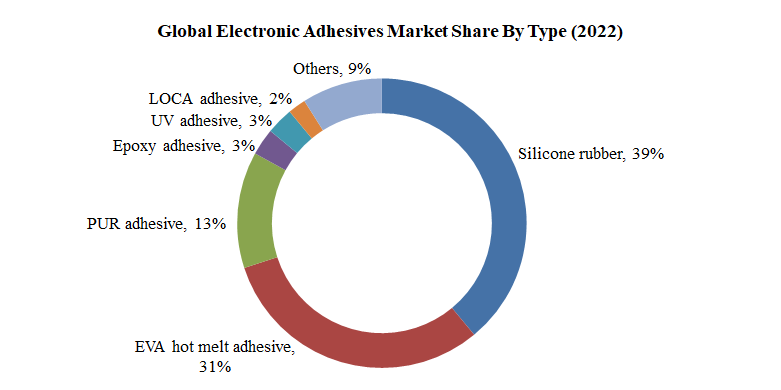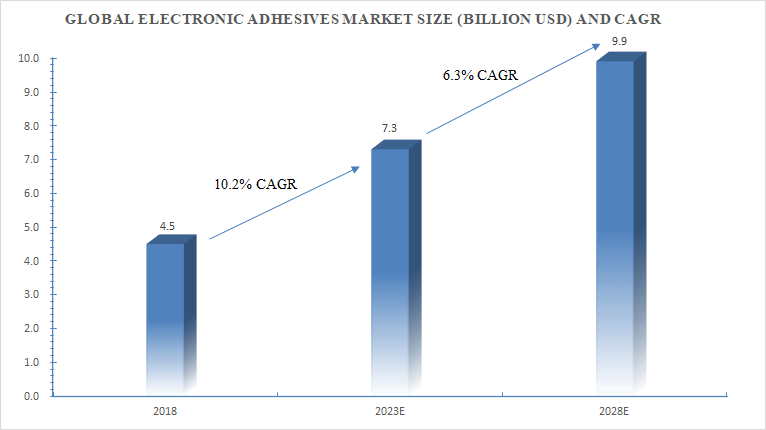Electronic Adhesives Producers and Electronic Adhesives Market Trend
Electronic adhesives are a type of adhesive that is specifically formulated for use in electronic devices. They are used to bond or attach electronic components, such as microchips and circuit boards, to each other or to a substrate. The main types of electronic adhesives are silicone rubber, EVA hot melt adhesive, PUR adhesive, epoxy adhesive, UV adhesive, and LOCA adhesive.
Silicone rubber is the most commonly used electronic adhesive, accounting for 39% of the market. EVA hot melt adhesive is the second most popular, with a market share of 31%. PUR adhesive and epoxy adhesive make up 13% and 3% of the market, respectively, while UV adhesive and LOCA adhesive each account for 3% and 2% of the market, respectively.

The global market for electronic adhesives was valued at $4.5 million in 2018 and is expected to reach $7.3 million by 2023, representing a CAGR of 10.2% from 2018 to 2023. By 2028, the market is projected to grow to $9.9 million, with a CAGR of 6.3% from 2023 to 2028.
 The electronic adhesive market is dominated by a few major players, including Henkel AG & Co. KGaA, H.B. Fuller Company, 3M Company, and Dow Chemical Company. These companies offer a range of electronic adhesives and related products and services, including application equipment and technical support.
The electronic adhesive market is dominated by a few major players, including Henkel AG & Co. KGaA, H.B. Fuller Company, 3M Company, and Dow Chemical Company. These companies offer a range of electronic adhesives and related products and services, including application equipment and technical support.
The Asia-Pacific region is the largest market for electronic adhesives, accounting for over 50% of the global market share. The region's dominance is driven by the presence of several major electronics manufacturing countries, such as China, Japan, and South Korea. Other regions, including North America and Europe, also have significant market shares due to the growing demand for electronic devices in these regions.
Electronic adhesives are used in a wide range of electronic applications, including smartphones, tablets, laptops, televisions, and automotive electronics. As the demand for these devices continues to grow, so too will the demand for electronic adhesives. The market is expected to continue to grow in the coming years, driven by technological advancements, increasing demand for electronic devices, and growing adoption of new electronic adhesives.